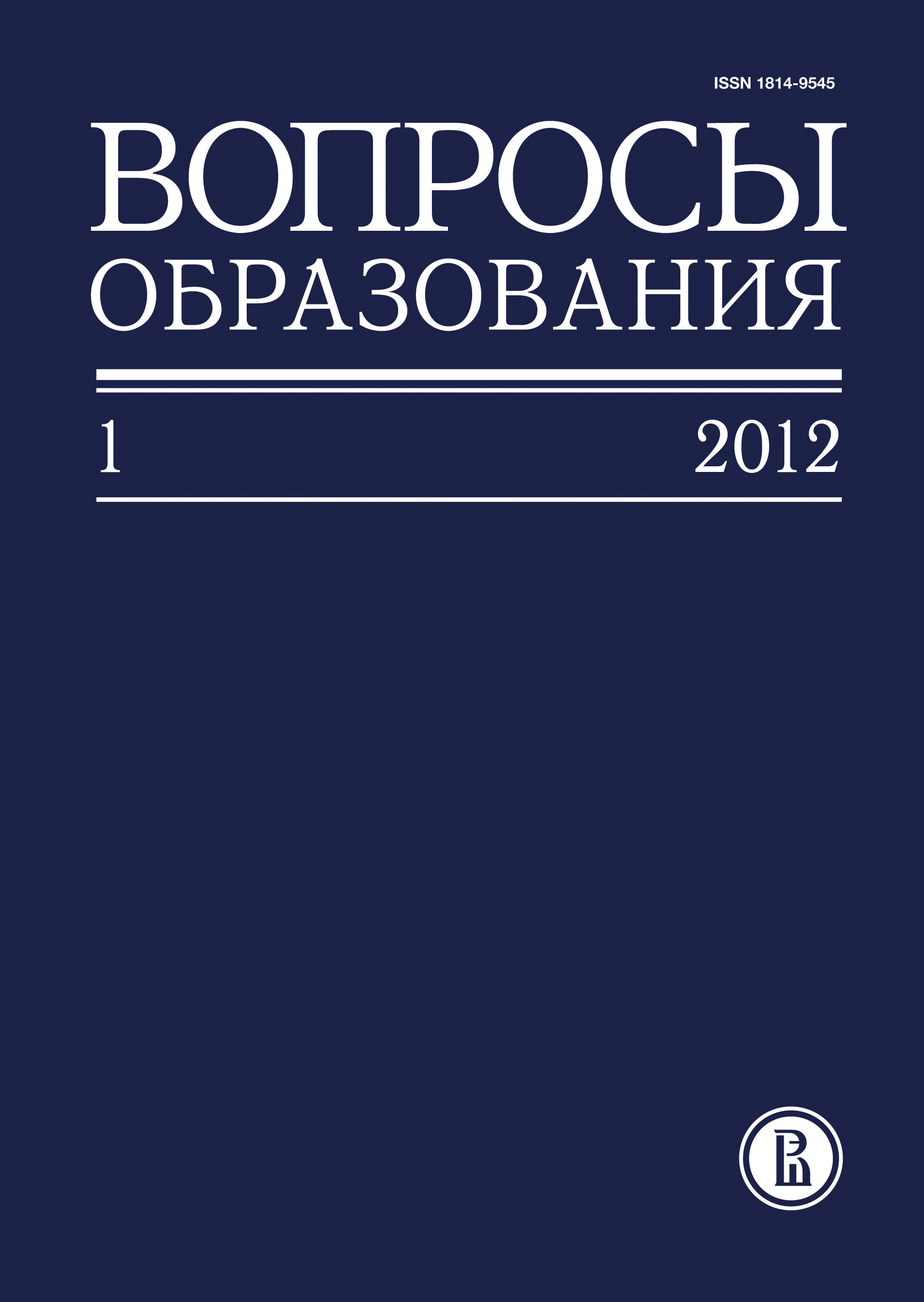Заочное высшее профессиональное образование в России: общая характеристика (2005–2011 гг.)
Аннотация
Материал подготовлен по данным Института статистических исследований и экономики знаний НИУ ВШЭОзерова Ольга Кузьминична — заведующая отделом статистики образования Института статистических исследований и экономики знаний НИУ ВШЭ. Эл. адрес: oozerova@hse.ru
Адрес: Россия, 101000, Москва, ул. Мясницкая, д. 20.
Кобыща Варвара — студентка магистратуры НИУ ВШЭ. Эл. адрес: ko.varvara@gmail.com
Адрес: Россия, 101000, Москва, ул. Мясницкая, д. 20.
Охарактеризована общая ситуация в сфере российского заочного высшего профессионального образования. Продемонстрировано изменение численности заочных студентов высших учебных заведений. На основании анализа показателей приема в вузы прогнозируется сохранение установившейся с 2010 г. тенденции к сокращению численности студентов-заочников. Показано, что изменения, происходящие в заочной форме обучения, в целом соответствуют общей для всех форм обучения тенденции к снижению показателей приема. При этом обращается внимание на то, что прием заочных студентов начал сокращаться только в последние годы, до этого времени он рос, несмотря на уменьшение приема на очную форму обучения и общей численности принятых студентов. Показатели приема заочных студентов сопоставлены с показателями выпуска. Выявлено стабильное увеличение выпуска специалистов заочной формы обучения.
Прослежена зависимость изменения объема заочного обучения от сдвигов в структуре коммерческого высшего профессионального образования. Предполагается, что уменьшению численности заочных студентов к 2010/2011 учебному году, помимо общего снижения численности студентов всех форм обучения, способствовала ликвидация коммерческих учебных заведений, не прошедших процедуру лицензирования, в результате чего сократилось количество мест заочной формы обучения.
Установлено, что новые форматы высшего образования (бакалавриат и магистратура) на данном этапе слабо сочетаются с заочной формой обучения, особенно в государственном и муниципальном секторе. Выделены группы специальностей и направлений подготовки в соответствии со степенью представленности в них студентов заочной формы относительно общей численности студентов. Описаны половозрастные характеристики студентов-заочников.








